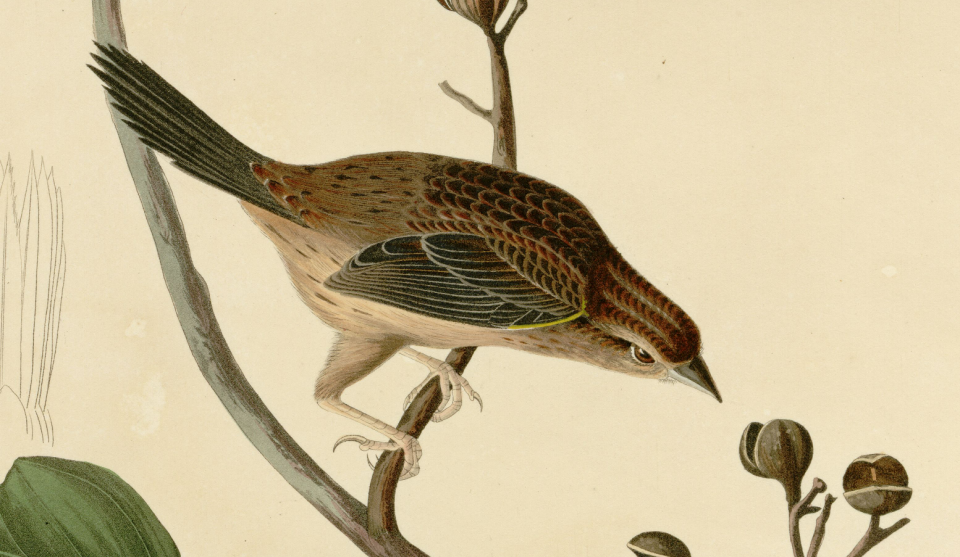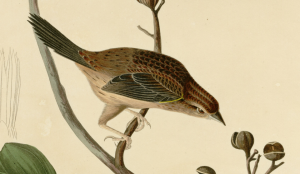
When I was living in New York, I went out once on an internet date with a man who told me about the sparrows that lived in the hallows of the pipes that made up the traffic lights in his neighborhood. For some reason I felt drawn to learn more about these little birds that were so much a part of my urban habitat. It’s like this everywhere. Many of us feel called to protect the earth, but we have very little knowledge of the life in front of us. I am going to start a series of inquiries about birds and plants that we take for granted and start with a sparrow as a way of connecting with this interest that was sparked a long time ago by a stranger who noticed such things.
In 1850, eight pairs of English sparrow were set free in Brooklyn, NY to combat cankerworms (aka. inchworms). The inchworms were ruining fruit orchards. The ultimate irony is that the sparrows loved to eat fruit buds even more than cankerworms!
Every sparrow you see today is from one of these original 16-sparrows.
Sparrow Weavers, native to Eurasia and Africa, build domed nests. Both sexes care for the eggs and later the young.
Melospiza Meodia, the Song Sparrow, seeks food by scratching away at the ground litter with both feet simultaneously doing a backward jump.
SPARROW QUOTES
The sparrow that is twittering on the edge of my balcony is calling up to me this moment a world of memories that reach over half my lifetime, and a world of hope that stretches farther than any flight of sparrows.
Donald G. Mitchell
Tell me not of joy: there’s none Now my little sparrow’s gone; He, just as you, Would toy and woo, He would chirp and flatter me, He would hang the wing awhile, Till at length he saw me smile, Lord! how sullen he would be!
William Cartwright
Sparrows who emulate peacocks are likely to break a thigh.
Burmese Proverb
History of the House Sparrow by Steve Eno
Urban Bird Information/Stanford University
Life of Birds (PBS) and Evolution
Posted by Sharon Fennimore, a rogue anthropologist, mind body coach and yoga instructor who is an urban naturalist at heart and believes we can only love the whole earth by expressing adoration and awareness for the life we experience each and every day.





